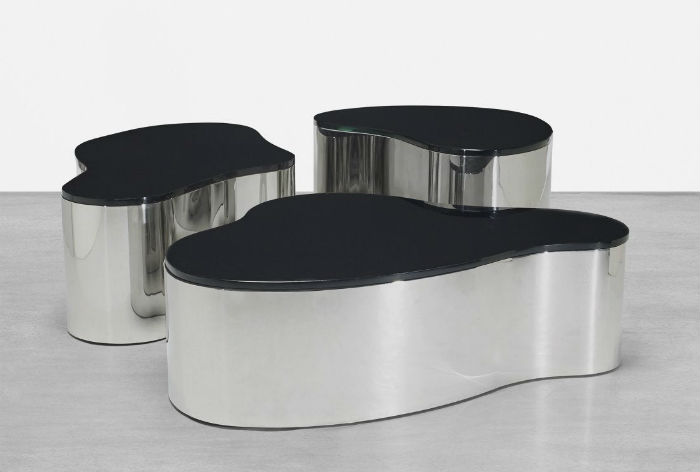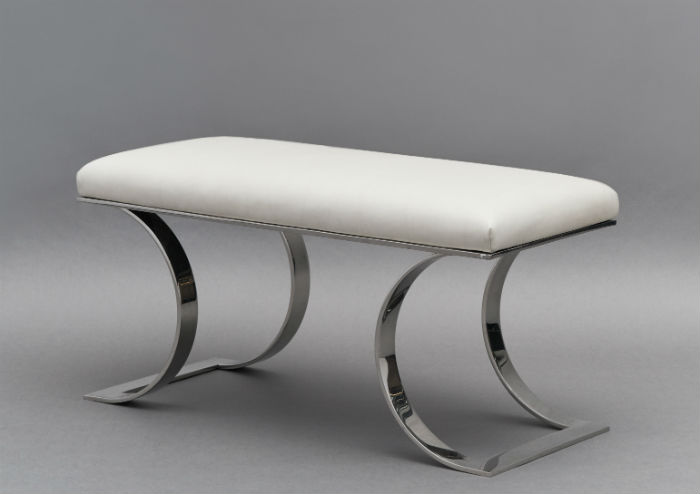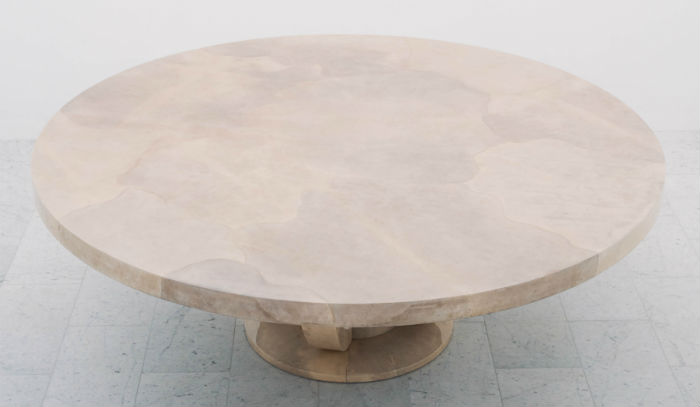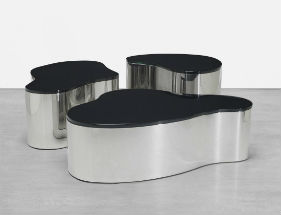
NEW YORK – No study of late 20th century luxury furniture design would be complete without considering the impressive contributions to this field by designer Karl Springer, whose work is immediately recognizable for its bold proportions, exotic finishes and streamlined forms.
Born in Germany in 1931, Springer arrived in New York in 1957. He was soon working for Lord & Taylor and Bergdorfs, designing window displays and using his previous training as a bookbinder to create jewel boxes, desk accessories and telephone tables covered with exotic skins, said Todd Merrill, owner/gallerist of Todd Merrill Studio in New York. It was Springer’s work for department stores where he got his taste of working with snakeskin and luxe materials, a practice he would later continue with furniture in the mid-1960s.
His designs soon attracted celebrity clients like then-Duchess of Windsor Wallis Simpson, an early proponent of his work; Diana Ross; Jackie Onassis; and Frank Sinatra along with thousands of private buyers, cementing Springer’s place in the design world.

Springer’s name quickly became synonymous with high-end luxury handcrafted furniture.
“By combining European style and craftsmanship with American enthusiasm and ingenuity, Springer captured the decadent spirit of the late 1970s and ’80s,” Merrill said. “His pieces are opulent without being ostentatious or overwrought. By the late 1980s, his works were among some of the most expensive furniture in the country because of his uncompromising workmanship and rigid control, in pursuit of quality.”
Influenced by myriad sources from Art Deco furniture master Emile-Jacques Ruhlmann and French minimalist interior designer Jean-Michel Frank to the Bauhaus school, and his world travels, the designer created furniture blending Art Deco forms with sumptuous materials.
“Mr. Springer worked with many materials – often exotic ones – to translate pure, classical shapes into contemporary, custom-made furniture, light fixtures or Venetian-glass objects,” according to his obituary in the New York Times in December 1991.

The designer has been widely credited with bringing back shagreen (the textured hide of a shark or dogfish) into popularity, once a trendy fabric covering for furniture and small decorative objects in the Art Deco era but had fallen out of fashion until Springer revived it. Shagreen continues to inspire designers and artists today. He is also renowned for his work with inlaid veneers, rare wood, lacquered parchment, metal, stone and faux finishes.
The Springer-look is easily recognized by streamlined designs based on European styles, combined with refined craft skills – such as lacquering, batiking, and leatherwork – that were not particularly common to American furniture making, Merrill said.

Springer’s vintage furniture pieces are highly collectible today. “Given his propensity for clean-lines, high-quality and limited production, most of his designs continue to have a fervent fan base,” Merrill said. “Full sets of Springer’s Onassis, Regency and JMF Chairs are all highly desirable among collectors. Perfect proportions for comfort and utility make these chairs a go with any period of furniture so right for many designers.
“Springer’s Freeform tables and Mushroom lamps continue to be two of the most sought-after pieces, because of their timeless quality and versatility,” he added. “The designs of these are incredibly assertive. The shapes are playful and yet incredibly bold.” Even contemporary versions of Springer’s designs are highly sought after. Merrill and Mark Eckman, president of Karl Springer LTD, have teamed up to put several of Springer’s most iconic designs like his metallic Free Form tables and a gravity-defying Sculpture bench back into production.
“As a lover of all things ’70s chic, I adore how Springer’s designs use a few of my favorite textures and materials: Lucite, metals, goatskin parchment and gorgeous wood veneers,” Summer Thornton Design blogged here.

In an article in Architectural Digest (January/February 1977), Springer told the writer, “Quality, that is what is most important to me. The integrity of surfaces, the elements of restraint – these make luxury more piquant.” During the 1960s and 1970s, Springer made his mark in the furniture and design worlds with his custom designs that married top craftsmanship with a scrupulous attention to detail.
While Springer’s works largely defined the image of what one thinks of late 20th-century luxury, especially during the Disco Decade, viewed from a contemporary perspective his work still resonates and has timeless appeal.
# # #



